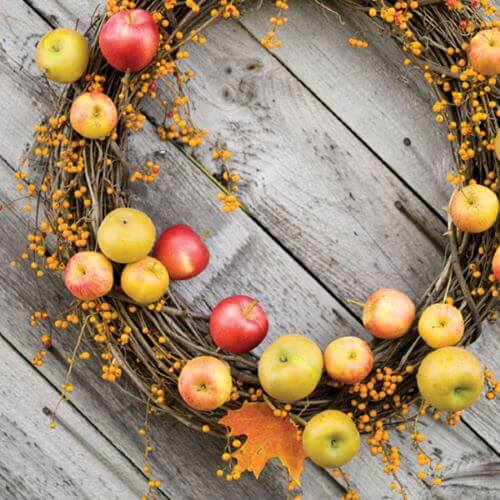Guide to Growing and Caring For Your Own Roses

If you want to grow roses, this guide to growing and caring for your own roses will facilitate the process and give you some advice for taking care of them. These flowers will fill your garden with life and aroma, as long as you do your best to keep them radiant. In addition to beautifying your outdoor spaces, you’ll enjoy the many benefits they have to offer.
Research has reviewed the beneficial properties of roses. The fruits of the rose bush act against infections and diseases such as the flu, while the whole plant: fruits, leaves and roots in infusion have been used as diuretics and also to fight colds, as they have a high content of vitamin C.
Guide to growing and caring for your own roses
If you want to enjoy a garden full of beautiful roses, you must bear in mind that newly planted ones must be given greater care, the first year is crucial for the rose bush to be consolidated. Without further ado, here are the tips for growing and caring for your roses:
Choosing a rose bush

The rose is a species that comes from the Asian continent and, as research has documented, there are more than 100 species and thousands of varieties and hybrids. The first step in choosing the right ones for your garden is related to the climate in which you’re located. These are some types of roses and their behaviors:
- Classic roses or hybrid tea: require more attention and protection in colder climates, and perform better in moderate climates.
- Shrub-type roses: behave very well in cold climates. They’re resistant and don’t require as much maintenance.
Now, from species to species there are differences in the impact and strength of fragrance. Also, there are differences in the rate of growth and size. There are also miniature roses to choose from too.
Planting the roses: guide to growing and caring for your own roses
The first thing to consider when planting roses is the location. You must ensure that they have access to sunlight and fresh air. Of course, if you live in a very hot place, it’s better to provide shade for them in the afternoons. Also, try to guarantee them space so they can breathe and grow healthy. Here are some other things to consider:
- Soak them in water for a few hours before planting, so their roots will keep them hydrated.
- Plant the roses in a raised soil bed where the water can drain well, as puddles of water don’t benefit roses. The place you chose must provide at least six hours of sun each day.
- Make holes about 40 centimeters deep and prepare them with good organic matter and perlite.
- Plant your rose bushes and tread each plant well so that it’s not loose and cover with a little more soil.
- Water them to keep them well hydrated as they begin to absorb water and nutrients from the soil.
Feed them using this guide to growing and caring for your own roses

That’s right! So that the roses are always alive and shiny you must feed them to provide them with extra nutrients. Apply organic fertilizers that contain phosphorus, an essential mineral for optimal root and flower growth.
Each product has its own specifications, but it’s usually enough to add one heaped tablespoon of powdered food for each plant. Liquid food is applied by diluting it in a watering can.
Water them
Newly planted roses need constant watering, which encourages root growth and strengthens them for when the drought hits. For this reason, you should focus on watering the base of the plants with greater emphasis.
Keep in mind that by watering the plants from above, you can spoil the flowers. In addition, wetting them can create a humid environment that causes fungi and other fungal diseases to proliferate.
But how do you know when it’s the right time to water? The trick is to touch the ground, if it feels dry you should water from two centimeters high. Since the water is required to penetrate the soil up to a foot deep, let the hose water the base of the plants for a long time.
The ideal time to water them is in the morning so that when the sun rises and the wind blows, the leaves dry very well.
Control pests: guide to growing and caring for your own roses

Pests love roses and they’re therefore prone to frequent invasions. The favorite parts for these pests are the stems, leaves and growth tips, so keep an eye on your roses and act quickly.
To prevent pests from taking over your roses, add one liter of calcium polysulfide to fifteen liters of water and spray them after pruning. This substance helps heal cuts and acts as an insecticide.
If it’s necessary to use other types of insecticides, try to avoid the chemicals harmful to the ecosystem, particularly those that may harm bees and other pollinators.
Prune and keep your roses clean
The last of the tips in this guide for growing and caring for your own roses includes pruning, which keeps your rose bushes clean. Cut the oldest flowers, this way you’ll stimulate the plant to produce more.
You should also defoliate to prevent the rose bush from going out of its limits and it’ll keep the base area clean. Collect withered petals and leaves so that insects can’t make their home there. This applies to grass or weeds too.
Guide to growing and caring for your own roses: enjoy them!

Finally, enjoy your roses, their aroma and the living environment that this type of plant generates. You can even cut some roses to decorate your spaces at home, use them to make desserts and infusions. You’ve got so many options and ways to enjoy the roses that you grew and cared for yourself.
Put this guide into practice to grow and care for your own roses
This is a simple guide to growing and caring for your roses that’ll help you to have a garden full of healthy, vibrant flowers. Roses will provide your outdoors with a delicious perfume, especially if you’ve opted for an aromatic variety. Ready to get planting?
All cited sources were thoroughly reviewed by our team to ensure their quality, reliability, currency, and validity. The bibliography of this article was considered reliable and of academic or scientific accuracy.
- De Lima Franzen, F., Rodrigues de Oliveira, M. S., Lidório, H. F., Farias Menegaes, J., & Martins Fries,
L. L. (2019). Composición química de pétalos de flores de rosa, girasol y caléndula para su uso en la alimentación humana. Ciencia y Tecnología Agropecuaria, 20(1), 149-158 - Arzate-Fernández, A., Bautista-Puga, M., Piña-Escutia, J., Reyes-Díaz, J., Vázquez-García, L. Técnicas tradicionales y biotecnológicas en el mejoramiento genético del rosal. Universidad Autónoma del Estado de México. 2014.








